Code
HCS2771
Weight
8.4 Kg / 18.52 lbs
Size
Height
51cm (20") Width
36cm (14") Depth
26cm (10") Material
Copper
Availability
Sold
Date Added
2009-02-08 15:21:04
Note : We used to sell this product 16 years ago so it may no longer be in our stock.
It is possible that we still have it with our suppliers but the price could be different from before.
Feel free to order. We will verify availability and inform you promptly.
It is possible that we still have it with our suppliers but the price could be different from before.
Feel free to order. We will verify availability and inform you promptly.

Safe Payment
We accept Paypal, Money Transfer, Bank Transfer
Confidence
Protection covers your purchase and personal data.
Worldwide Delivery
We ship Worldwide, except Russia.Shipping cost US$25.2 for upto 0.5 kgs

Hotline
Talk to help line for your question on 9841267335Dipankara one of the Buddhas of the past, said to have lived on Earth one hundred thousand years.
Theoretically, the number of Buddhas having existed is enormous and they are often collectively known under the name of "Thousand Buddhas". Each was responsible for a life cycle. According to some Buddhist traditions, Dipankara (also Dipamkara) was a Buddha who reached enlightenment eons prior to Shakyamuni, the historical Buddha. Generally, Buddhists believe that there has been a succession of many Buddhas in the distant past and that many more will appear in the future; Dipankara, then, would be one of numerous previous Buddhas, while Shakyamuni was the most recent, and Maitreya will be the next Buddha in the future.
Chinese Buddhism tends to honor Dipankara as one of many Buddhas of the past[citation needed], which forms with Shakyamuni (Buddha of the present) and Maitreya (Buddha of the future), the Buddhas of Three Times.
Mahayana text named the Sangatha Sutra.
Dipankara is generally represented as a sitting Buddha, but his depictions as a standing Buddha are common in China, Thailand, and Nepal; with the right hand he generally forms a protection mudra (abhaya mudra), and often he forms it with both hands.
He is rarely depicted alone; one of the Buddhas of Bamyan, destroyed by the Taliban government in Afghanistan in 2001, was said to portray Dipankara. Statues of Dipankara can also be found in the Longmen and Yungang Grottoes in China.
He is generally depicted with two Bodhisattvas, Manjushri and Vajrapani (common in Java) or Avalokiteswara and Vajrapani (common in Sri Lanka); or with the Buddhas who come after him, Gautama and Maitreya.
Prediction
One story recounts a meeting between Dipankara Buddha and Shakyamuni, many lifetimes before Shakyamuni's eventual enlightenment. When Dipankara told Shakyamuni he would one day become a Buddha, Shakyamuni replied, "I am to become a Buddha, awakened to enlightenment; may you tread with your feet on my hair - on my birth, old age, and death." Dipankara Buddha then said, "Freed from human existence, you will become an effective teacher, for the sake of the world. Born among the Shakyas, as the epitome of the Triple World, the Lamp of all Beings, you will be known as Gauthama. You will be the son of King Suddhodana and Queen Maya. Shariputta and Moggallana will be your chief disciples. Your caretaker will name as Ananda"
In 45 years life of the Buddha, said almost 554 past life stories, Jaathaka Katha in Sinhalese of himself. Gauthama Bodisatta, a person starts the journey to become a Buddha filling 10 Paramita, was born in the time of Dipankara Buddha, and was rich and gave away all his wealth to become a Monk. It is said that Gauthama Bodisatta received his first Niyatha Vivarana, definite foresighting by a Buddha, from Dipankara Buddha. This encounter, among many other predictions of Shakyamuni Buddha's future enlightenment, can be found in a
Theoretically, the number of Buddhas having existed is enormous and they are often collectively known under the name of "Thousand Buddhas". Each was responsible for a life cycle. According to some Buddhist traditions, Dipankara (also Dipamkara) was a Buddha who reached enlightenment eons prior to Shakyamuni, the historical Buddha. Generally, Buddhists believe that there has been a succession of many Buddhas in the distant past and that many more will appear in the future; Dipankara, then, would be one of numerous previous Buddhas, while Shakyamuni was the most recent, and Maitreya will be the next Buddha in the future.
Chinese Buddhism tends to honor Dipankara as one of many Buddhas of the past[citation needed], which forms with Shakyamuni (Buddha of the present) and Maitreya (Buddha of the future), the Buddhas of Three Times.
Mahayana text named the Sangatha Sutra.
Dipankara is generally represented as a sitting Buddha, but his depictions as a standing Buddha are common in China, Thailand, and Nepal; with the right hand he generally forms a protection mudra (abhaya mudra), and often he forms it with both hands.
He is rarely depicted alone; one of the Buddhas of Bamyan, destroyed by the Taliban government in Afghanistan in 2001, was said to portray Dipankara. Statues of Dipankara can also be found in the Longmen and Yungang Grottoes in China.
He is generally depicted with two Bodhisattvas, Manjushri and Vajrapani (common in Java) or Avalokiteswara and Vajrapani (common in Sri Lanka); or with the Buddhas who come after him, Gautama and Maitreya.
Prediction
One story recounts a meeting between Dipankara Buddha and Shakyamuni, many lifetimes before Shakyamuni's eventual enlightenment. When Dipankara told Shakyamuni he would one day become a Buddha, Shakyamuni replied, "I am to become a Buddha, awakened to enlightenment; may you tread with your feet on my hair - on my birth, old age, and death." Dipankara Buddha then said, "Freed from human existence, you will become an effective teacher, for the sake of the world. Born among the Shakyas, as the epitome of the Triple World, the Lamp of all Beings, you will be known as Gauthama. You will be the son of King Suddhodana and Queen Maya. Shariputta and Moggallana will be your chief disciples. Your caretaker will name as Ananda"
In 45 years life of the Buddha, said almost 554 past life stories, Jaathaka Katha in Sinhalese of himself. Gauthama Bodisatta, a person starts the journey to become a Buddha filling 10 Paramita, was born in the time of Dipankara Buddha, and was rich and gave away all his wealth to become a Monk. It is said that Gauthama Bodisatta received his first Niyatha Vivarana, definite foresighting by a Buddha, from Dipankara Buddha. This encounter, among many other predictions of Shakyamuni Buddha's future enlightenment, can be found in a
Bronze Finishing
This Dipankar Buddha Statue product features a stunning Bronze patina finish. Our store takes pride in offering this exclusive patina, which involves a meticulous process utilizing organic materials such as butter and vegetable color. The aim is to recreate the appearance of an aged bronze statue, evoking a sense of timeless elegance.
The art of giving the bronze color to red copper is truly exceptional and is practiced by skilled craftsmen. With each piece, you not only acquire a beautifully finished Dipankar Buddha Statue product but also pay homage to the artisans who are dedicated to preserving this rare and fading art form. The result is a unique and captivating aesthetic that adds a touch of sophistication and nostalgia to any setting. Read More . . .
This Dipankar Buddha Statue product features a stunning Bronze patina finish. Our store takes pride in offering this exclusive patina, which involves a meticulous process utilizing organic materials such as butter and vegetable color. The aim is to recreate the appearance of an aged bronze statue, evoking a sense of timeless elegance.
The art of giving the bronze color to red copper is truly exceptional and is practiced by skilled craftsmen. With each piece, you not only acquire a beautifully finished Dipankar Buddha Statue product but also pay homage to the artisans who are dedicated to preserving this rare and fading art form. The result is a unique and captivating aesthetic that adds a touch of sophistication and nostalgia to any setting. Read More . . .
Lost-Wax System
This Bodhisattvas of Dipankar Buddha Statue is made by the process of the Lost Wax system. This is a very complicated, time consuming and historic process of making metal sculptures.Which is why it is sometimes called Precision Casting as well. Hence the sculptures made by this process are comparatively expensive. There are many new, advanced and less time consuming methods of casting metal sculptures available as well. But due to the benefits provided by the traditional lost wax system in quality control and customization, we prefer the Loss wax system over Ceramic molding, or sand casting to make our Bodhisattvas.
Below we have tried to illustrate the process of making a loss wax system statue: Read More . . .
This Bodhisattvas of Dipankar Buddha Statue is made by the process of the Lost Wax system. This is a very complicated, time consuming and historic process of making metal sculptures.Which is why it is sometimes called Precision Casting as well. Hence the sculptures made by this process are comparatively expensive. There are many new, advanced and less time consuming methods of casting metal sculptures available as well. But due to the benefits provided by the traditional lost wax system in quality control and customization, we prefer the Loss wax system over Ceramic molding, or sand casting to make our Bodhisattvas.
Below we have tried to illustrate the process of making a loss wax system statue: Read More . . .
About Buddha :
Gautama Buddha, popularly known as the Buddha, He is regarded as the founder of the world religion of Buddhism, and revered by most Buddhist schools as a savior, the Enlightened One who rediscovered an ancient path to release clinging and craving and escape the cycle of birth and rebirth. He taught for around 45 years and built a large following, both monastic and lay. His teaching is based on his insight into the arising of duḥkha and the ending of duhkha the state called Nirvana
The Buddha was born into an aristocratic family in the Shakya clan but eventually renounced lay life. According to Buddhist tradition, after several years of mendicancy, meditation, and asceticism, he awakened to understand the mechanism which keeps people trapped in the cycle of rebirth. The Buddha then traveled throughout the Ganges plain teaching and building a religious community. The Buddha taught a middle way between sensual indulgence and the severe asceticism found in the Indian śramaṇa movement. He taught a training of the mind that included ethical training, self-restraint, and meditative practices such as jhana and mindfulness. The Buddha also critiqued the practices of Brahmin priests, such as animal sacrifice and the caste system.
A couple of centuries after his death he came to be known by the title Buddha, which means "Awakened One" or "Enlightened One". Gautama's teachings were compiled by the Buddhist community in the Vinaya, his codes for monastic practice, and the Suttas, texts based on his discourses. These were passed down in Middle-Indo Aryan dialects through an oral tradition. Later generations composed additional texts, such as systematic treatises known as Abhidharma, biographies of the Buddha, collections of stories about the Buddha's past lives known as Jataka tales, and additional discourses, i.e. the Mahayana sutras.
A couple of centuries after his death he came to be known by the title Buddha, which means "Awakened One" or "Enlightened One". Gautama's teachings were compiled by the Buddhist community in the Vinaya, his codes for monastic practice, and the Suttas, texts based on his discourses. These were passed down in Middle-Indo Aryan dialects through an oral tradition. Later generations composed additional texts, such as systematic treatises known as Abhidharma, biographies of the Buddha, collections of stories about the Buddha's past lives known as Jataka tales, and additional discourses, i.e. the Mahayana sutras.


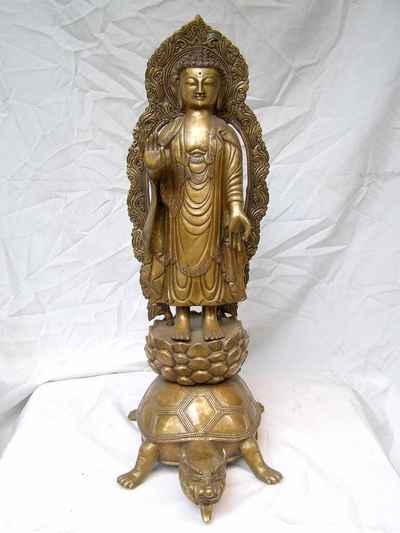
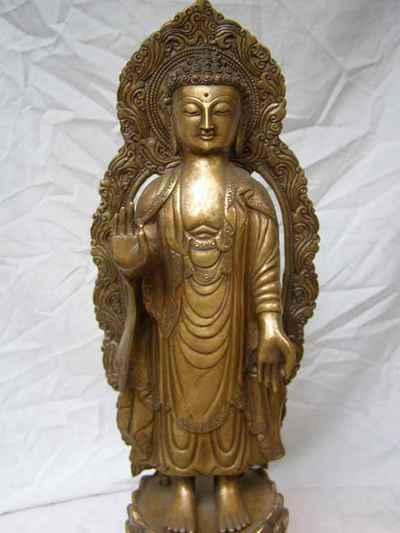
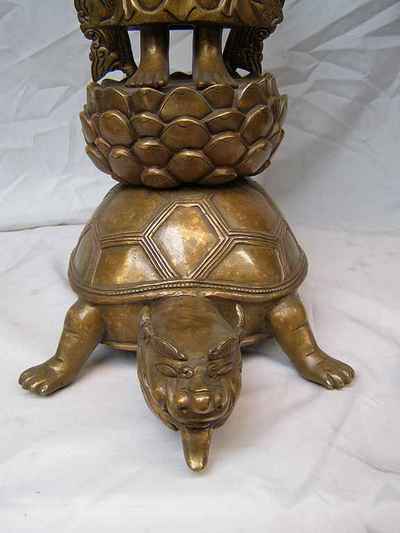
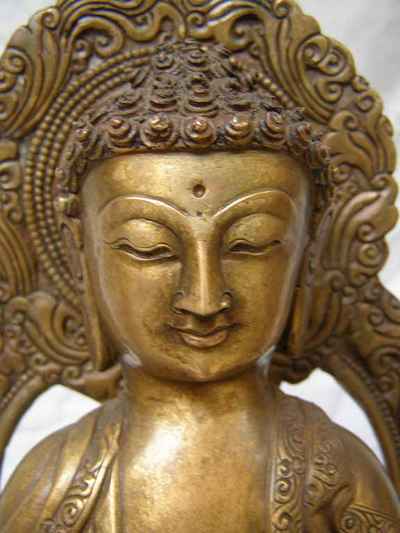
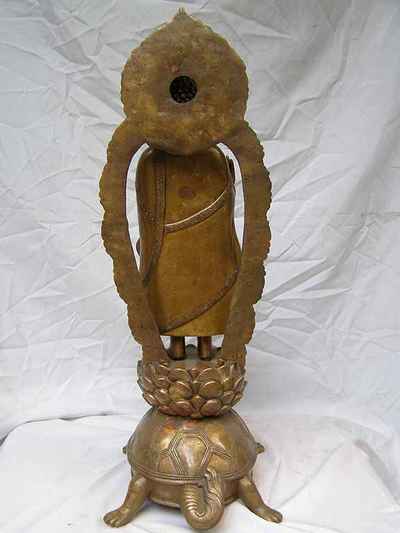


























































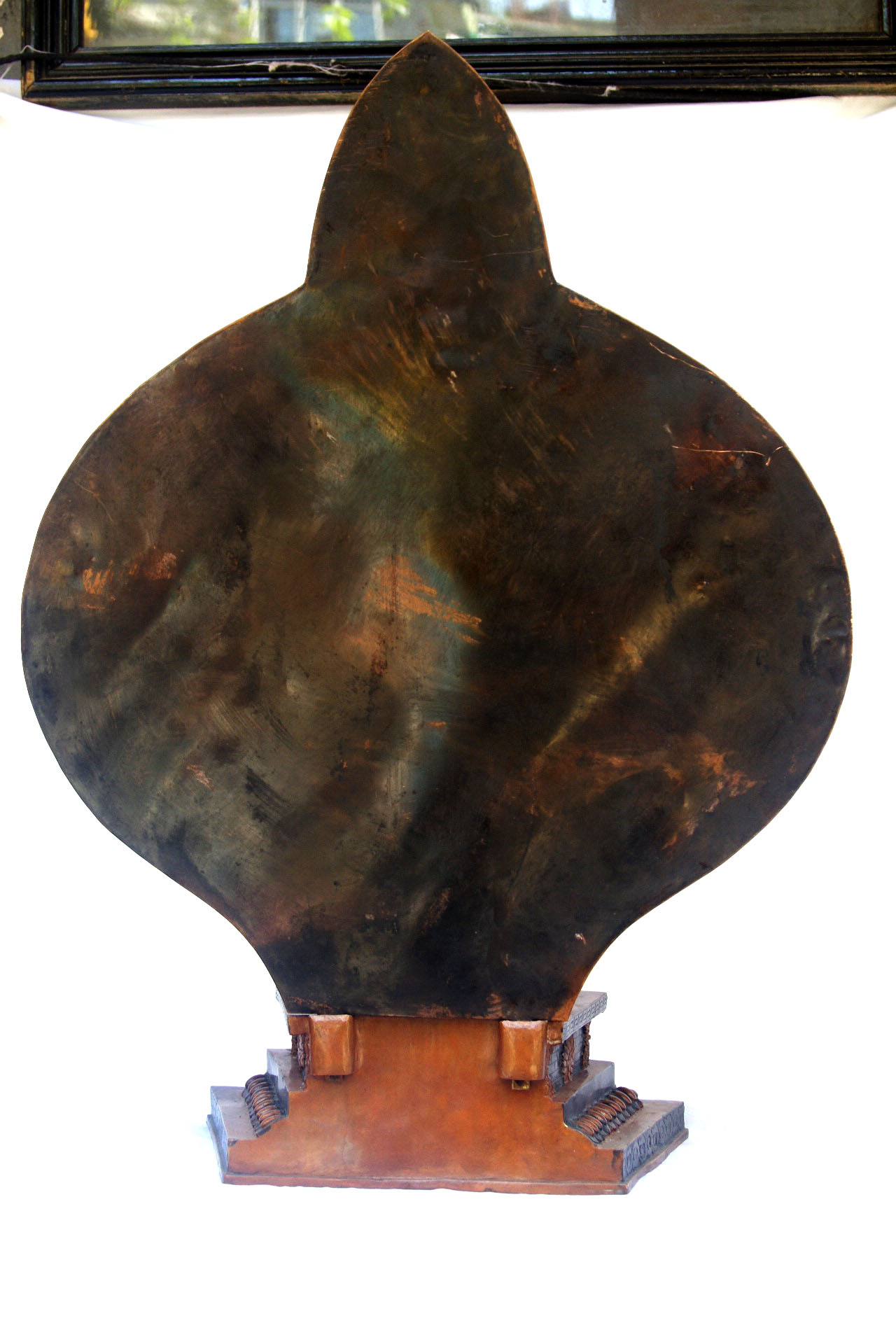
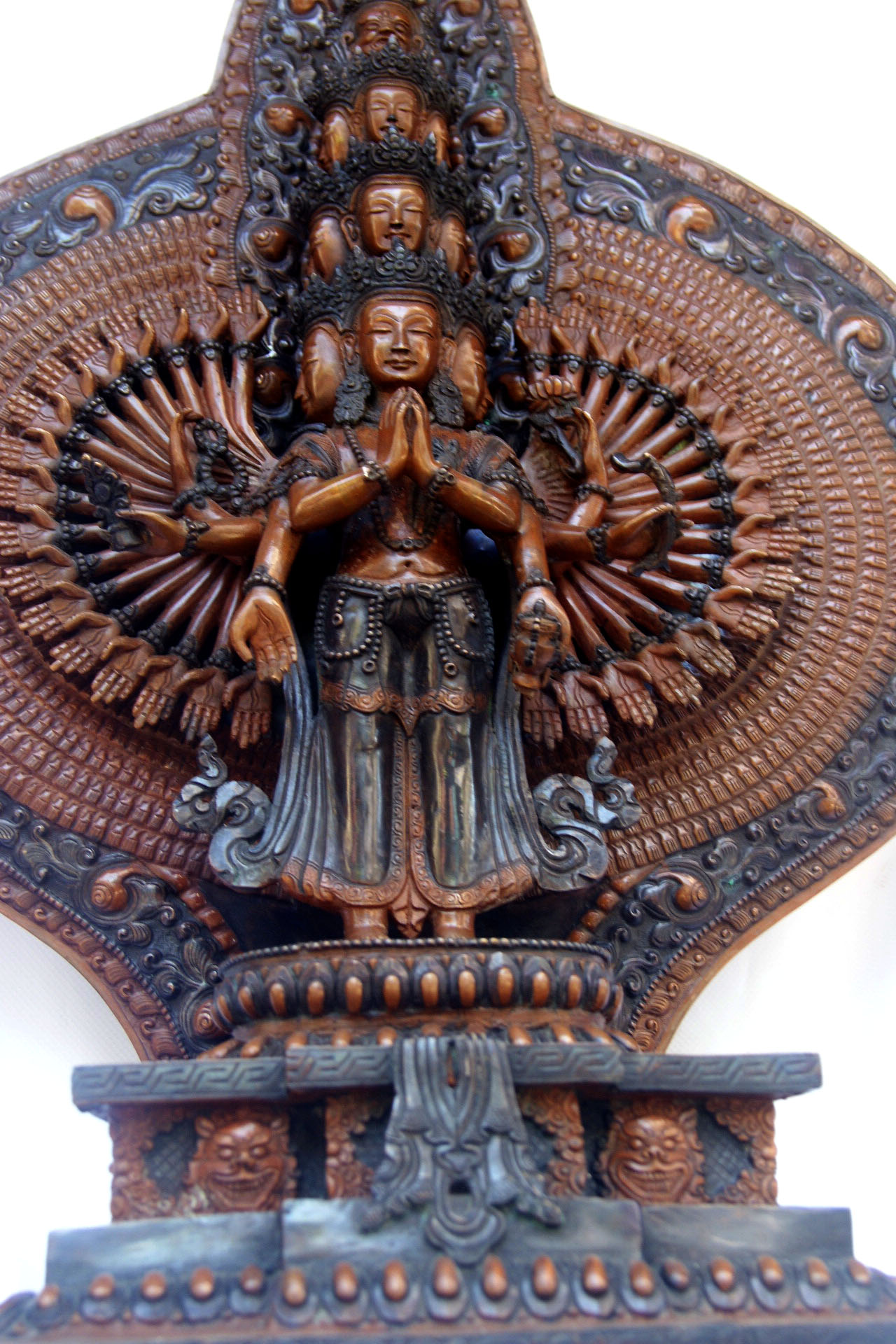
 Large Statue
Large Statue 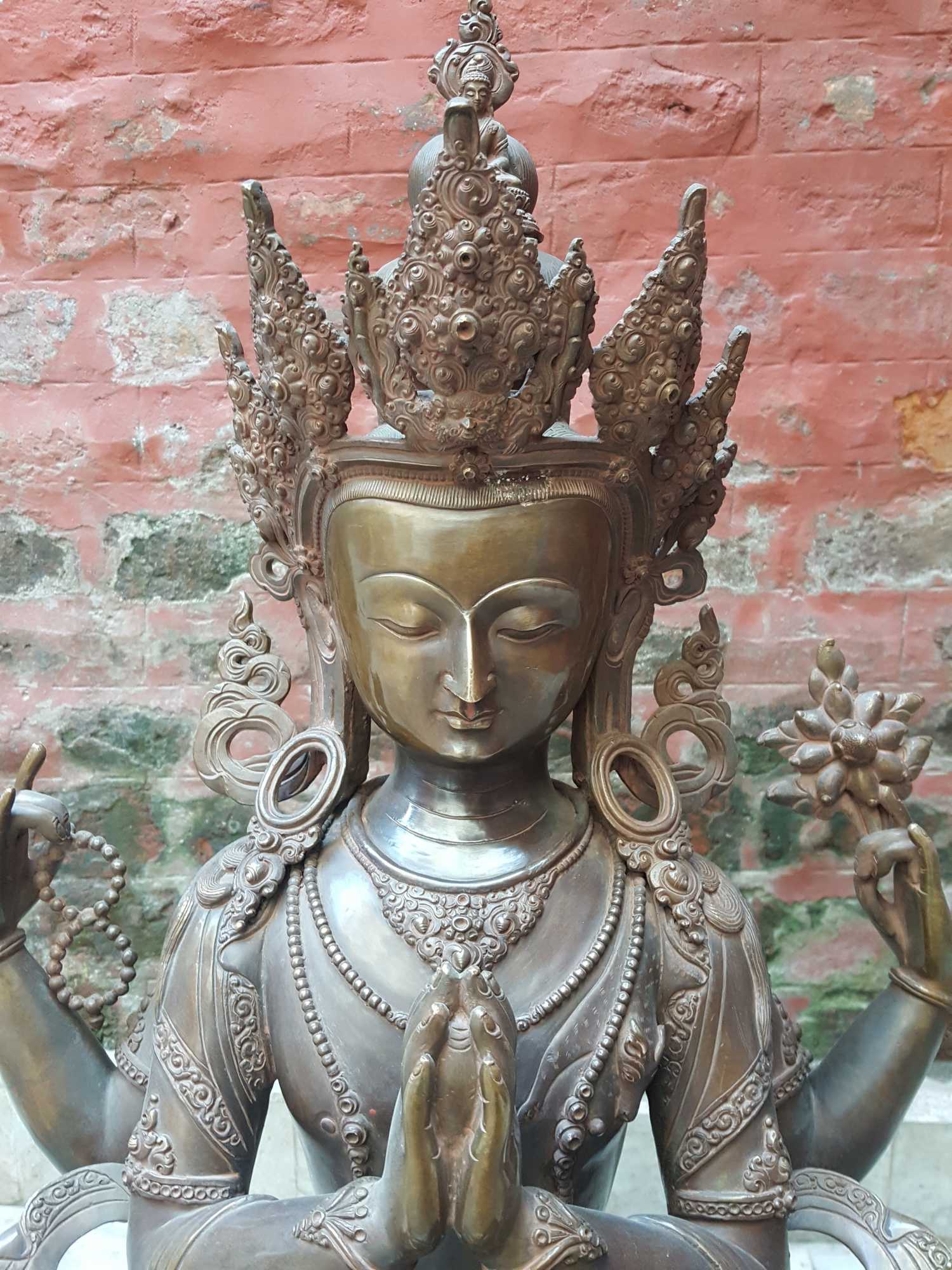 Large Statue
Large Statue 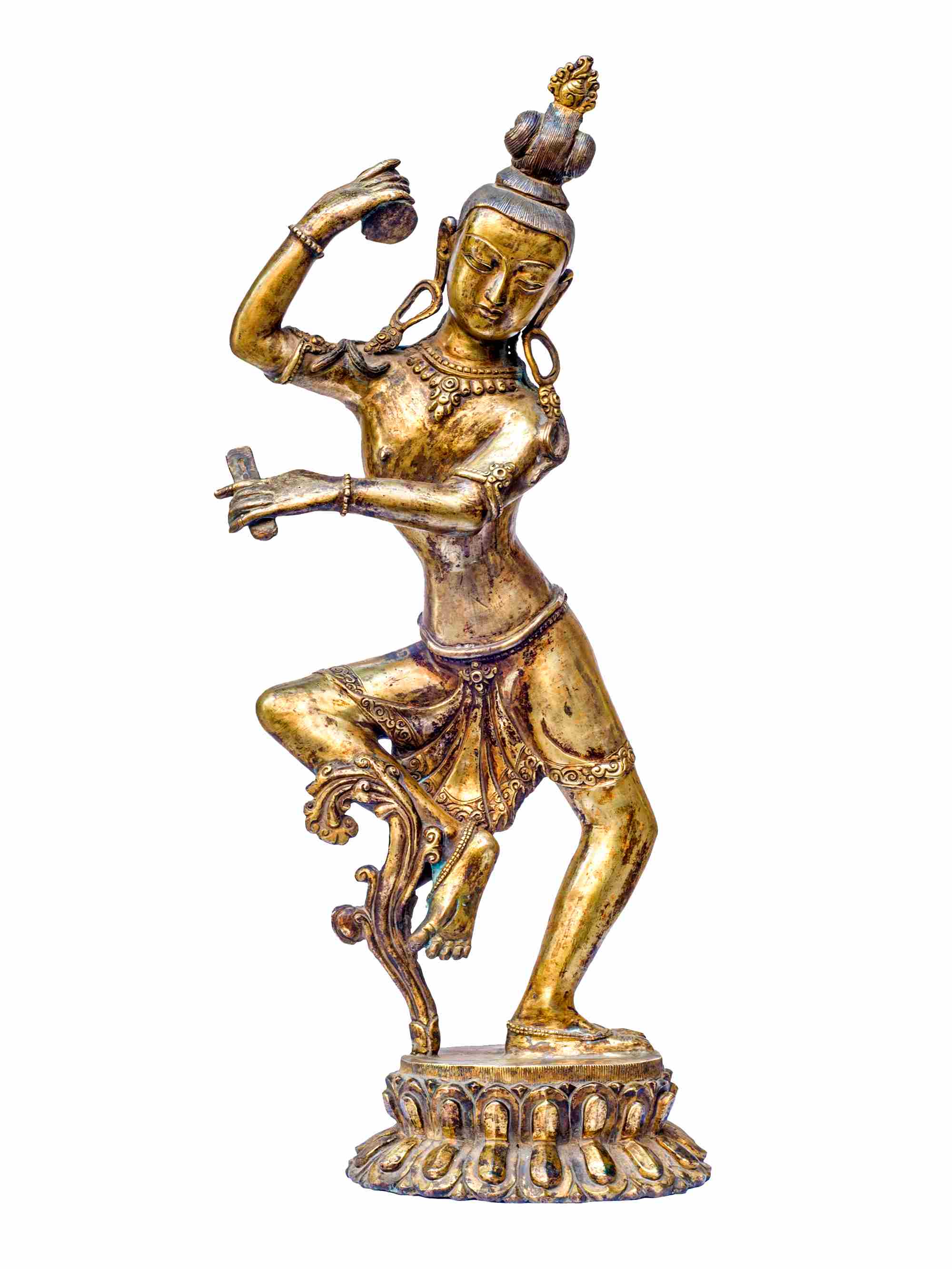 of Chintamani,
of Chintamani, 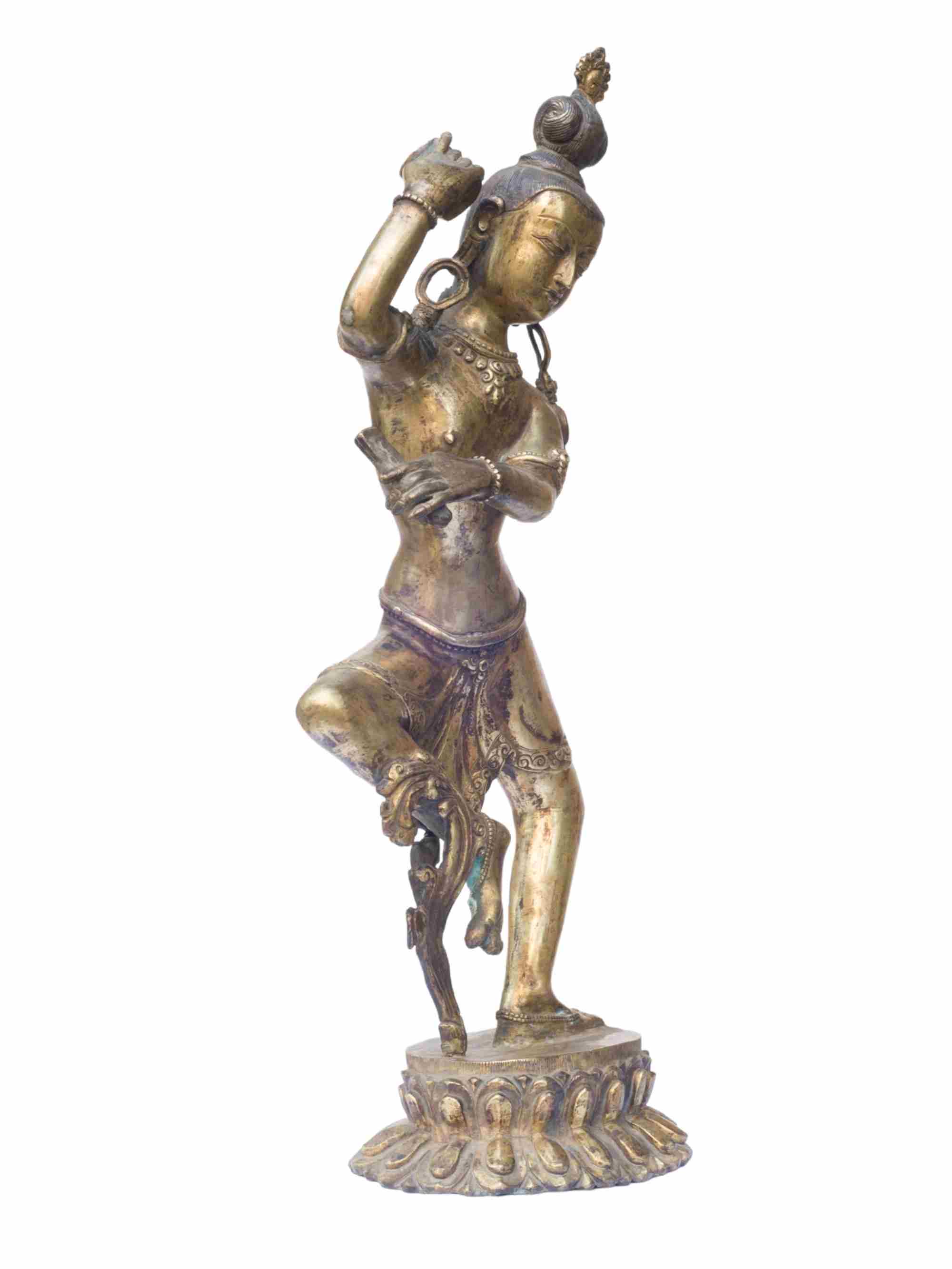 of Chintamani,
of Chintamani, 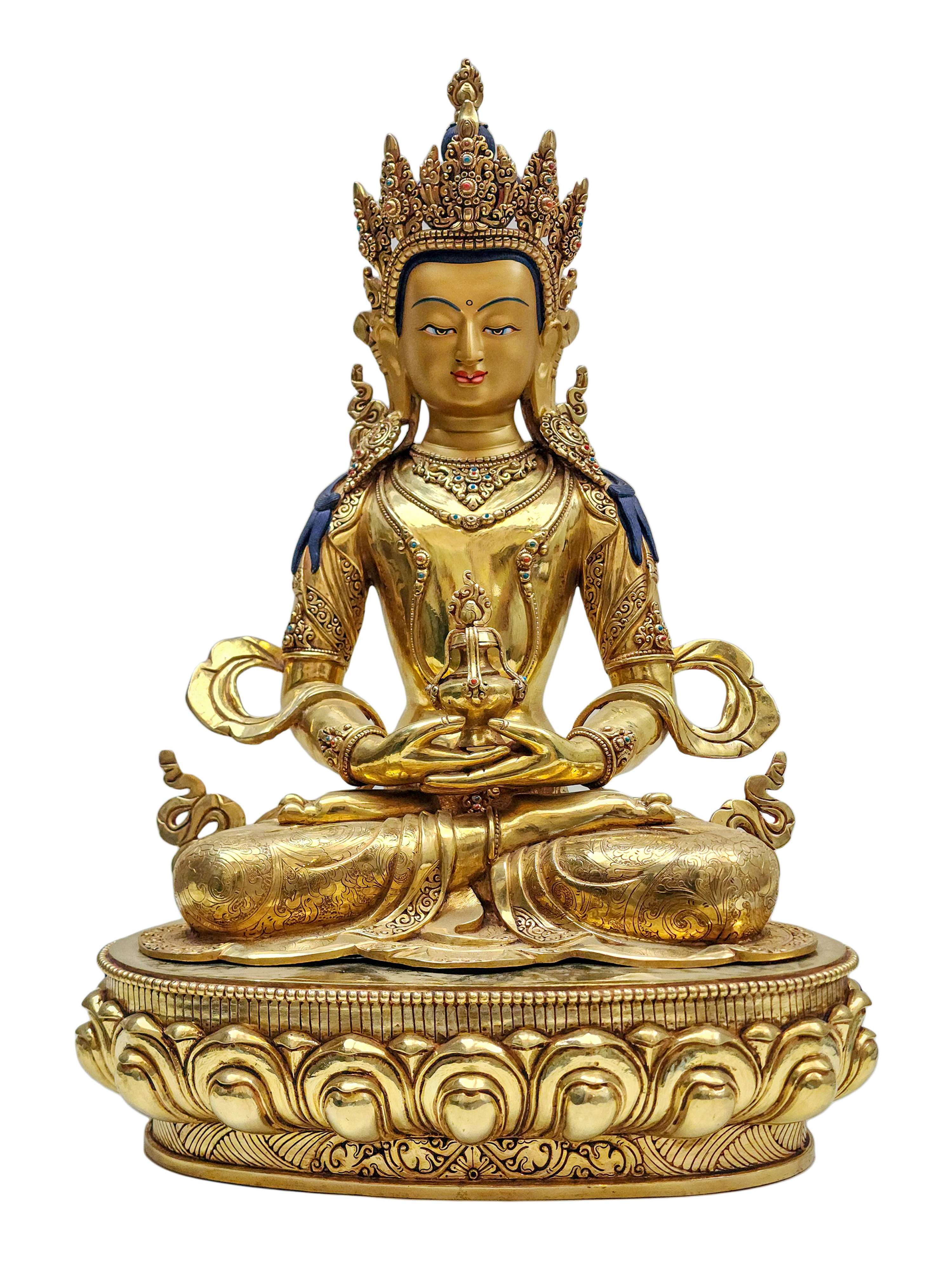 Aparimita Buddhist Handmade Statue,
Aparimita Buddhist Handmade Statue, 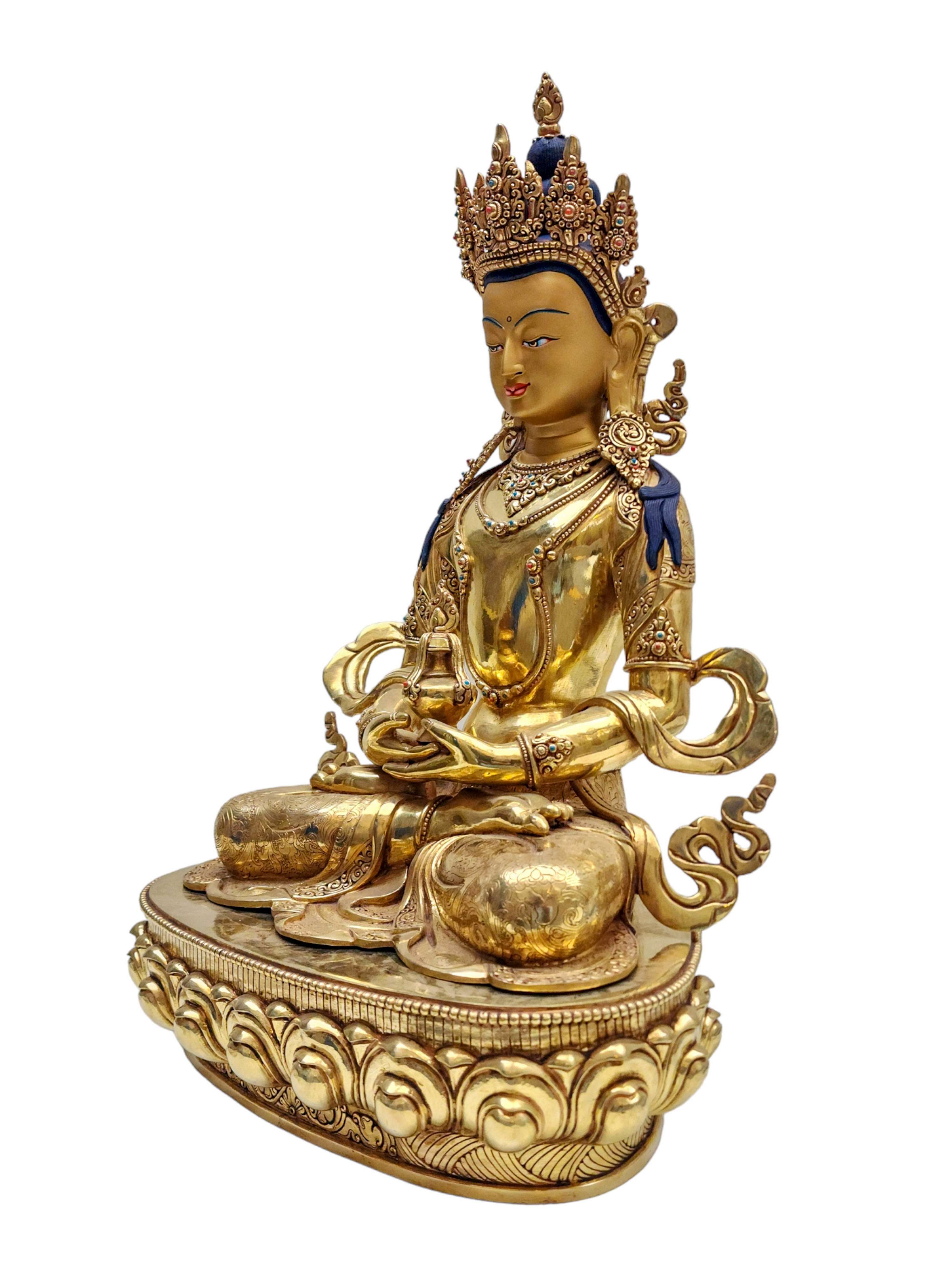 Aparimita Buddhist Handmade Statue,
Aparimita Buddhist Handmade Statue,  High Quality, Buddhist Statue
High Quality, Buddhist Statue 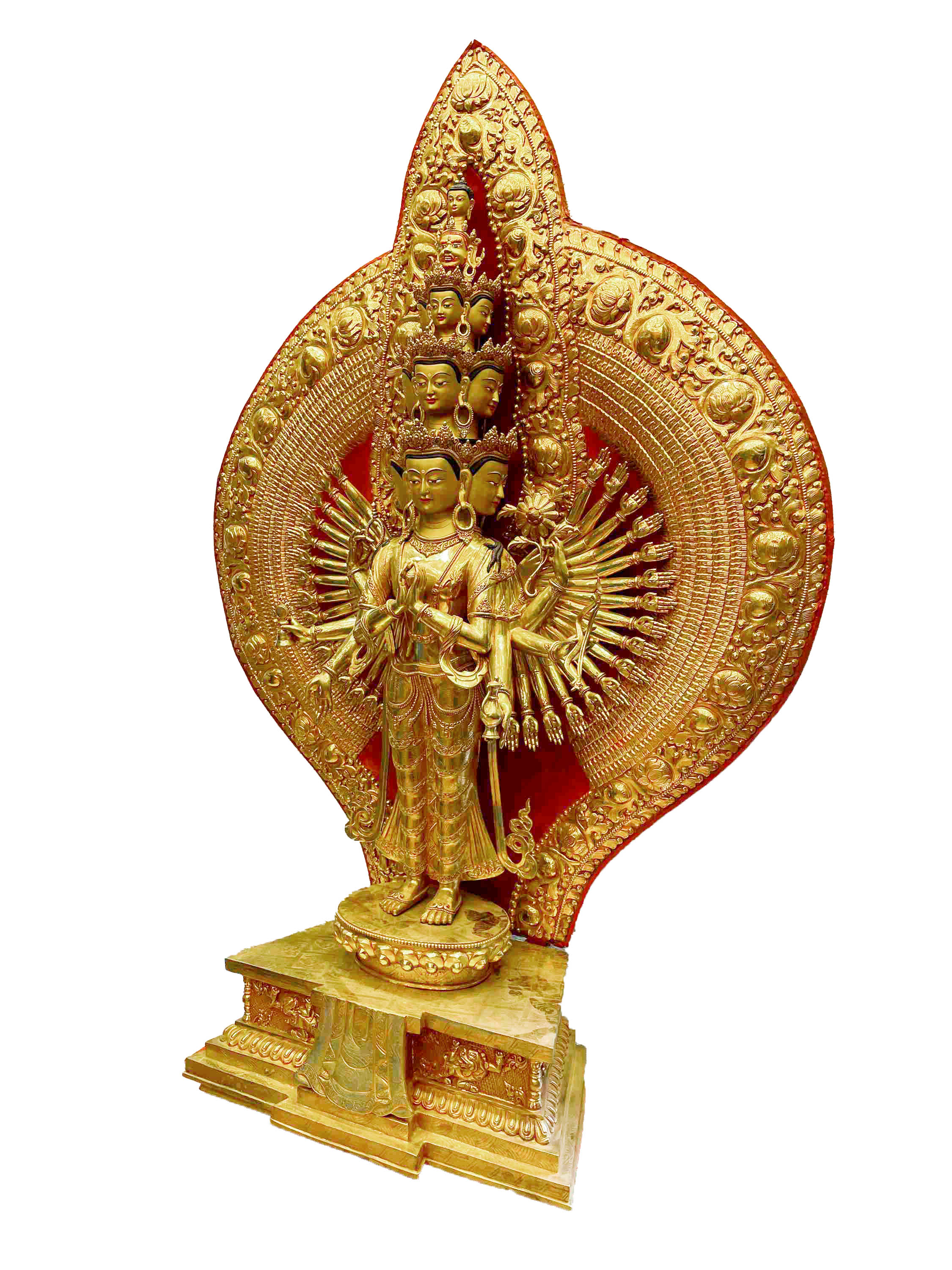 High Quality, Buddhist Statue
High Quality, Buddhist Statue 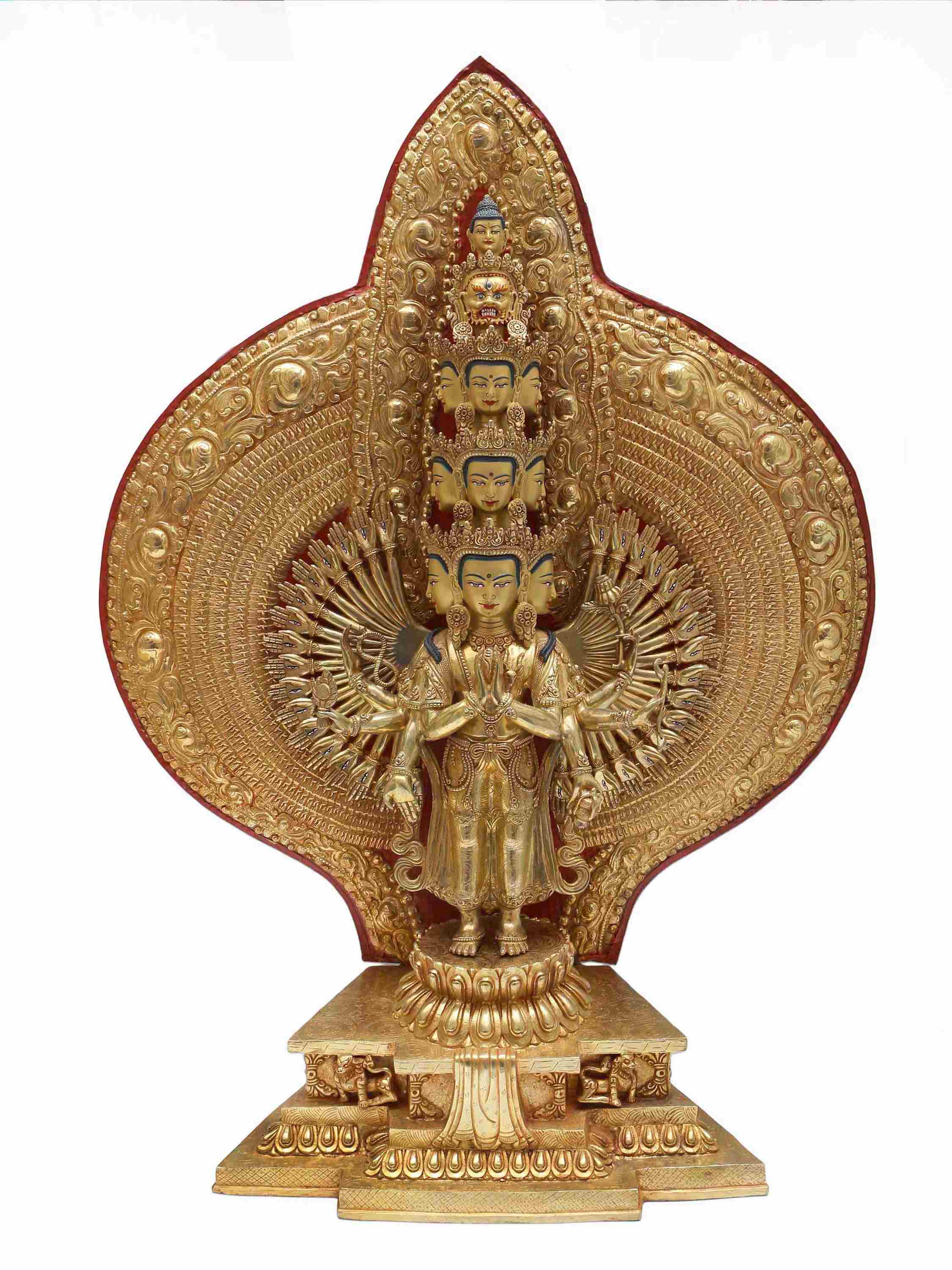 Full Fire Gold Plated,
Full Fire Gold Plated,  Full Fire Gold Plated,
Full Fire Gold Plated, 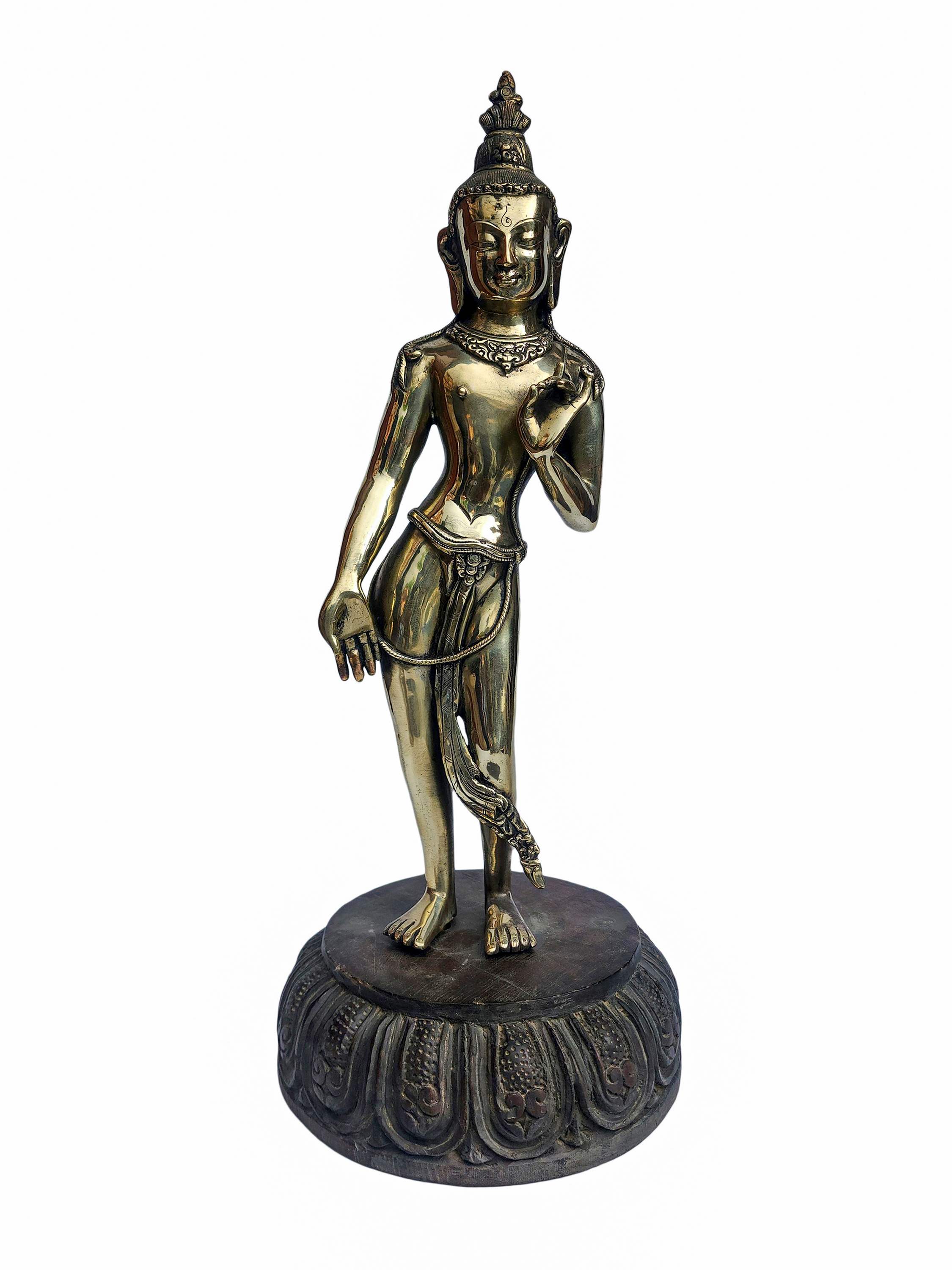 Glossy Finishing" title="Padmapani Lokeshvara, Buddhist Handmade Statue,
Glossy Finishing" title="Padmapani Lokeshvara, Buddhist Handmade Statue, 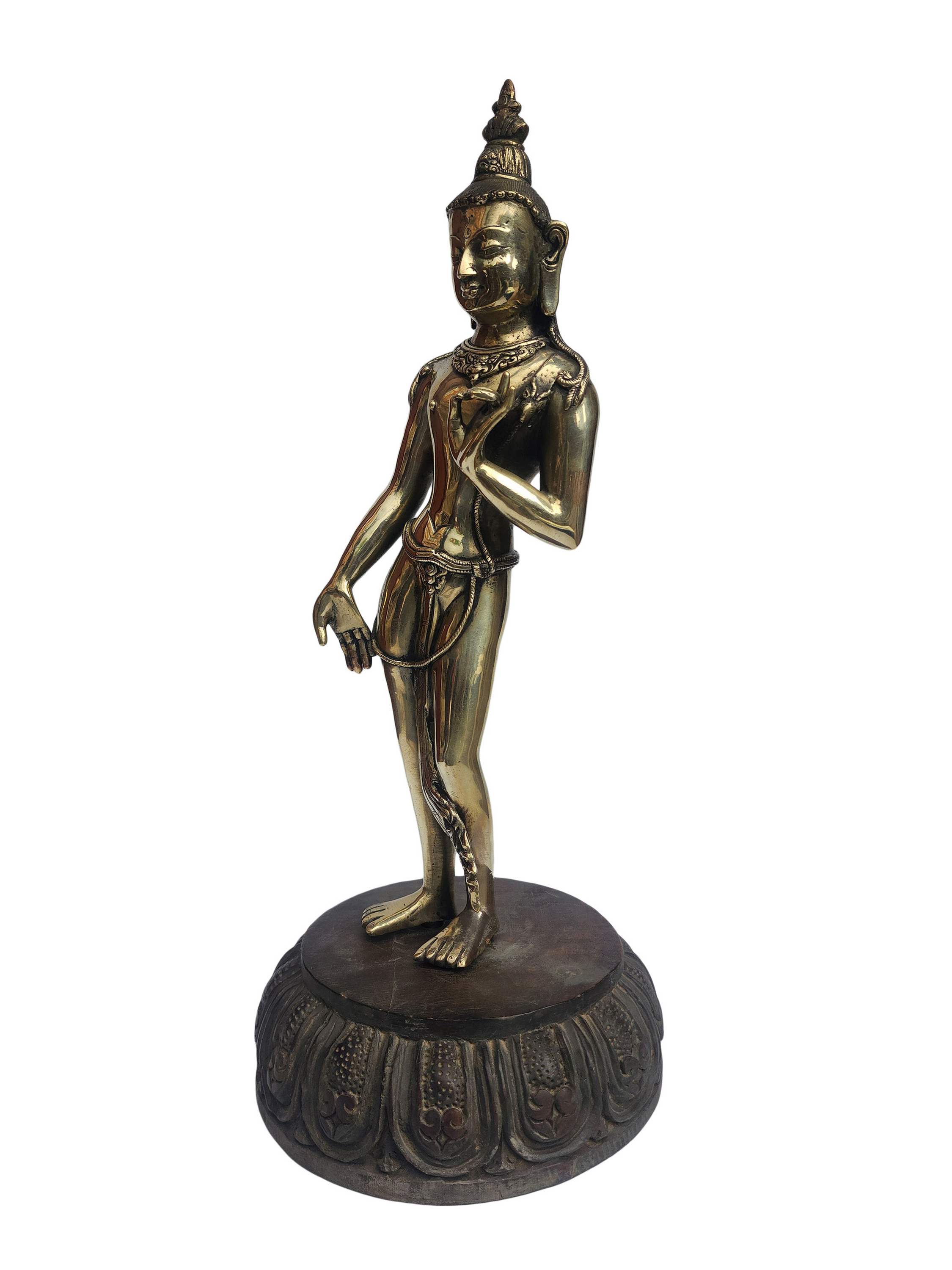 Glossy Finishing" title="Padmapani Lokeshvara, Buddhist Handmade Statue,
Glossy Finishing" title="Padmapani Lokeshvara, Buddhist Handmade Statue, 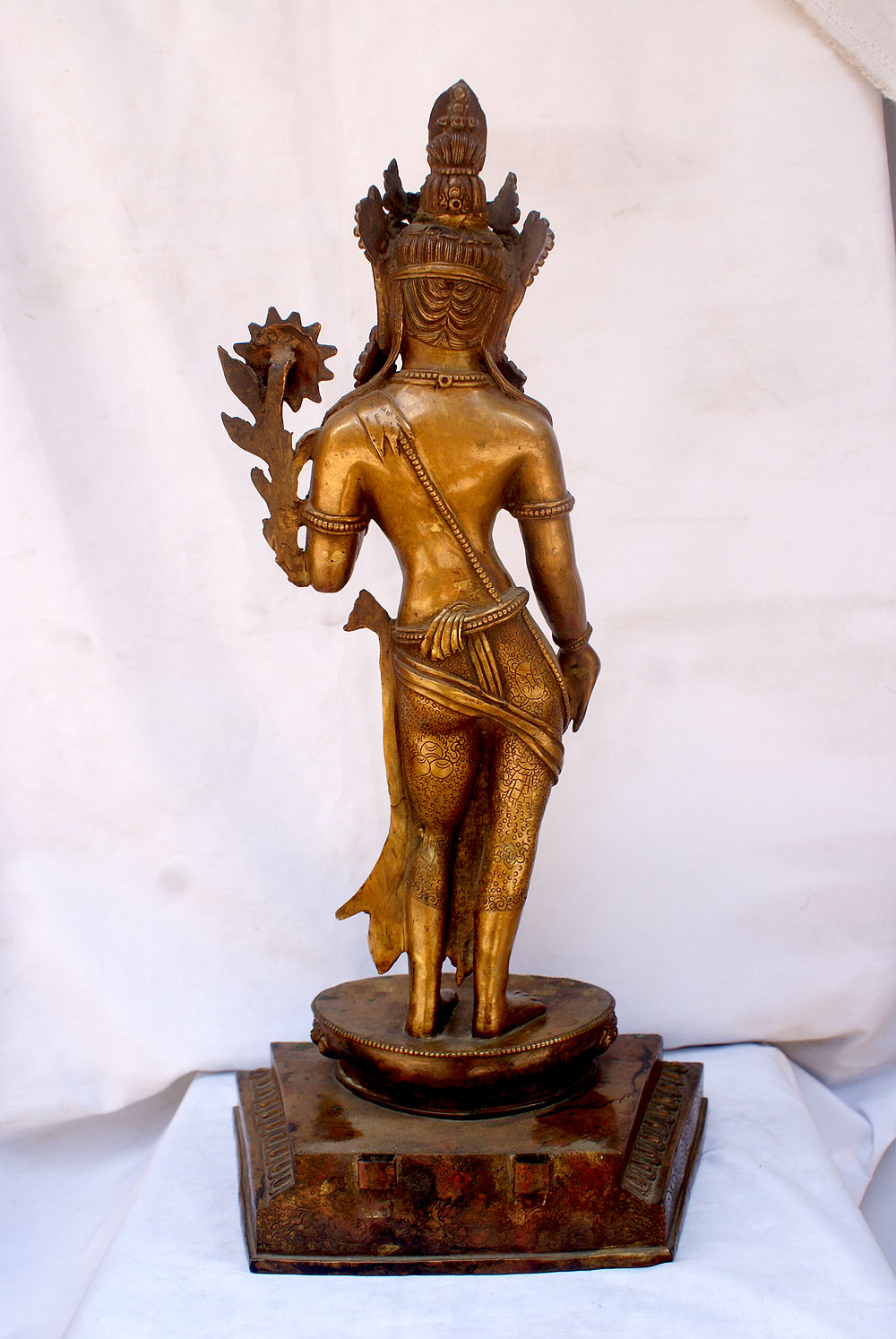 Bronze Finishing,
Bronze Finishing, 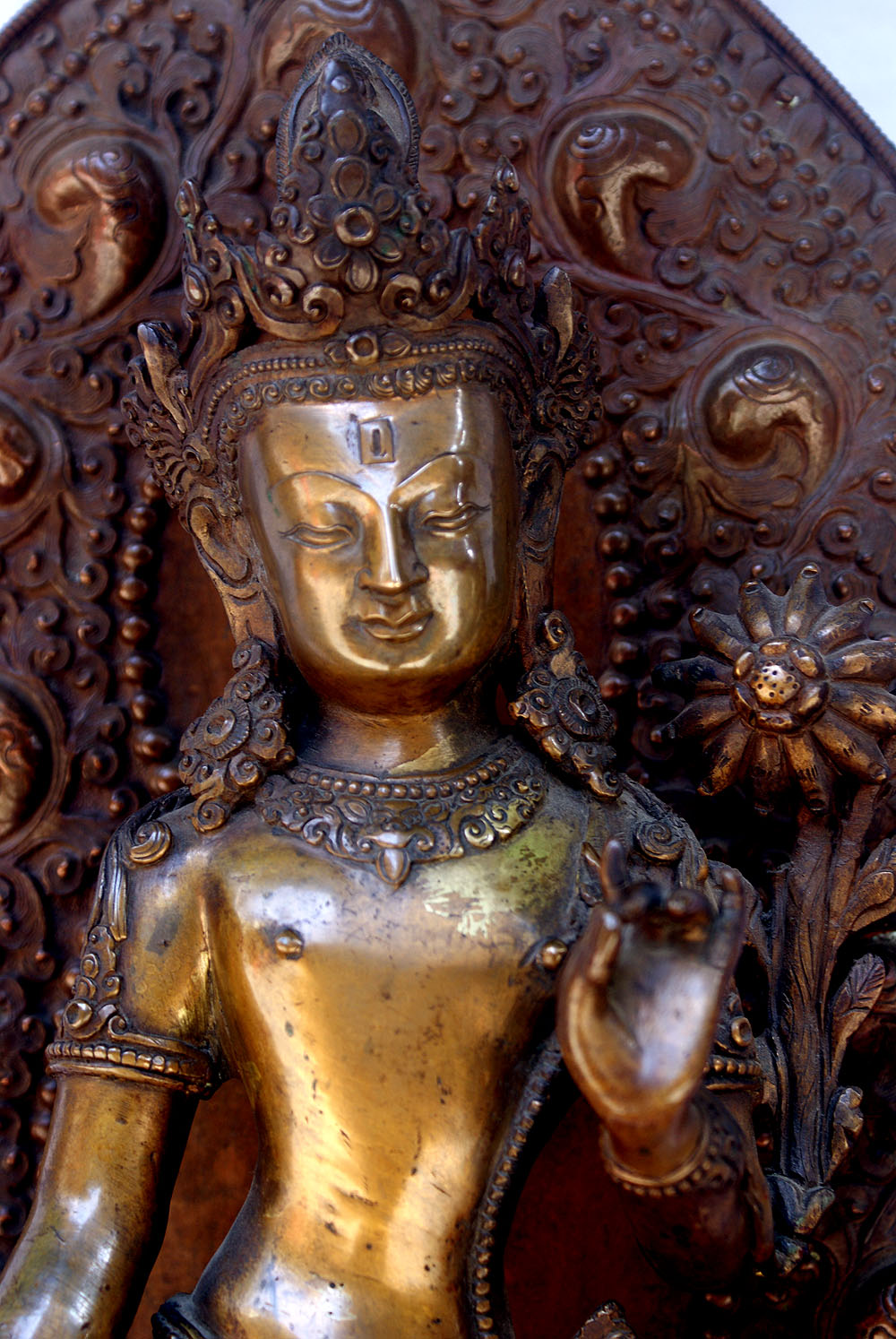 Bronze Finishing,
Bronze Finishing, 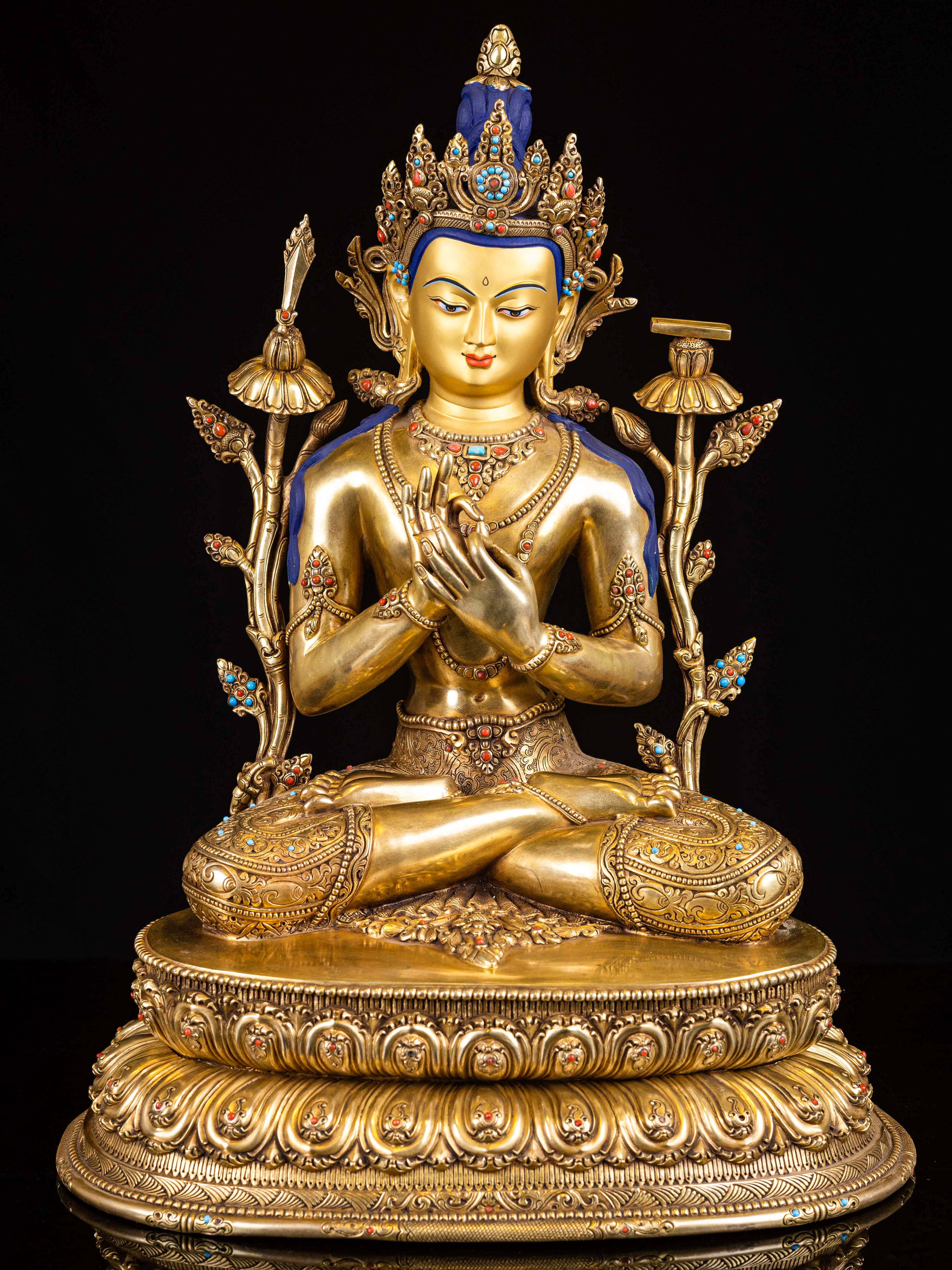 Manjushri Or
Manjushri Or 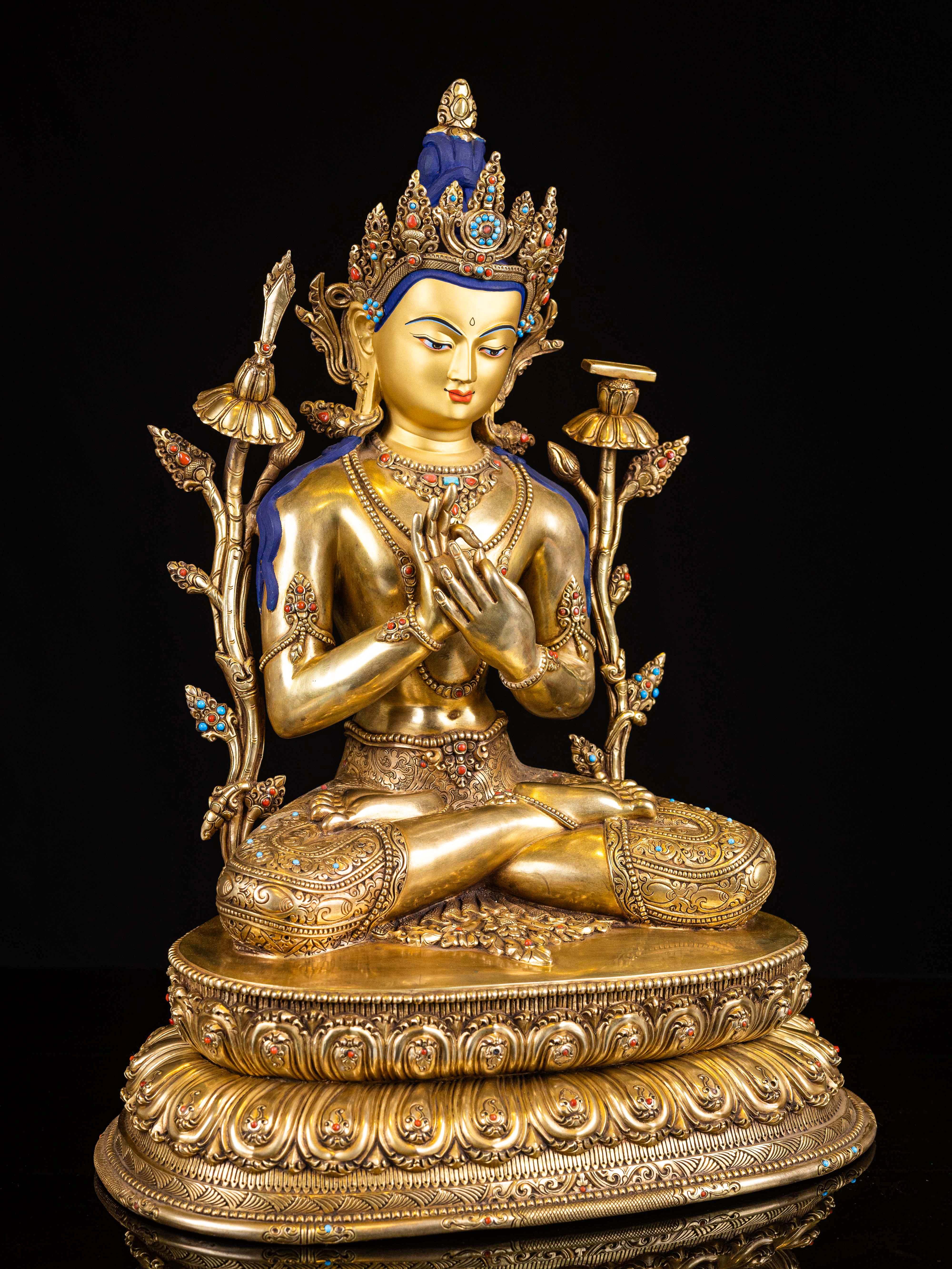 Manjushri Or
Manjushri Or 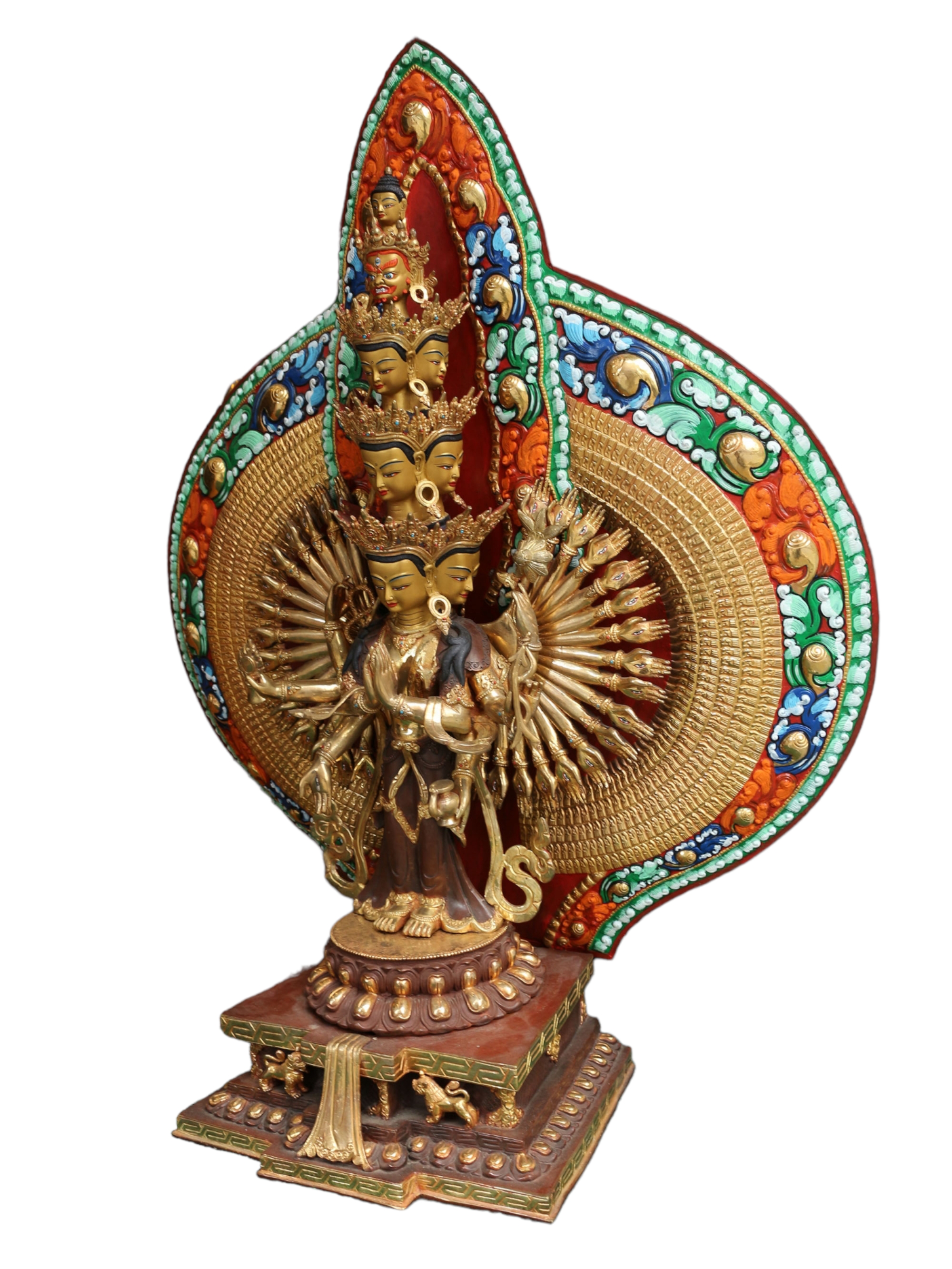 of Sahasrabhuja Avalokitesvara, Partly Gold Plated Painted Face" title="Buddhist Statue
of Sahasrabhuja Avalokitesvara, Partly Gold Plated Painted Face" title="Buddhist Statue 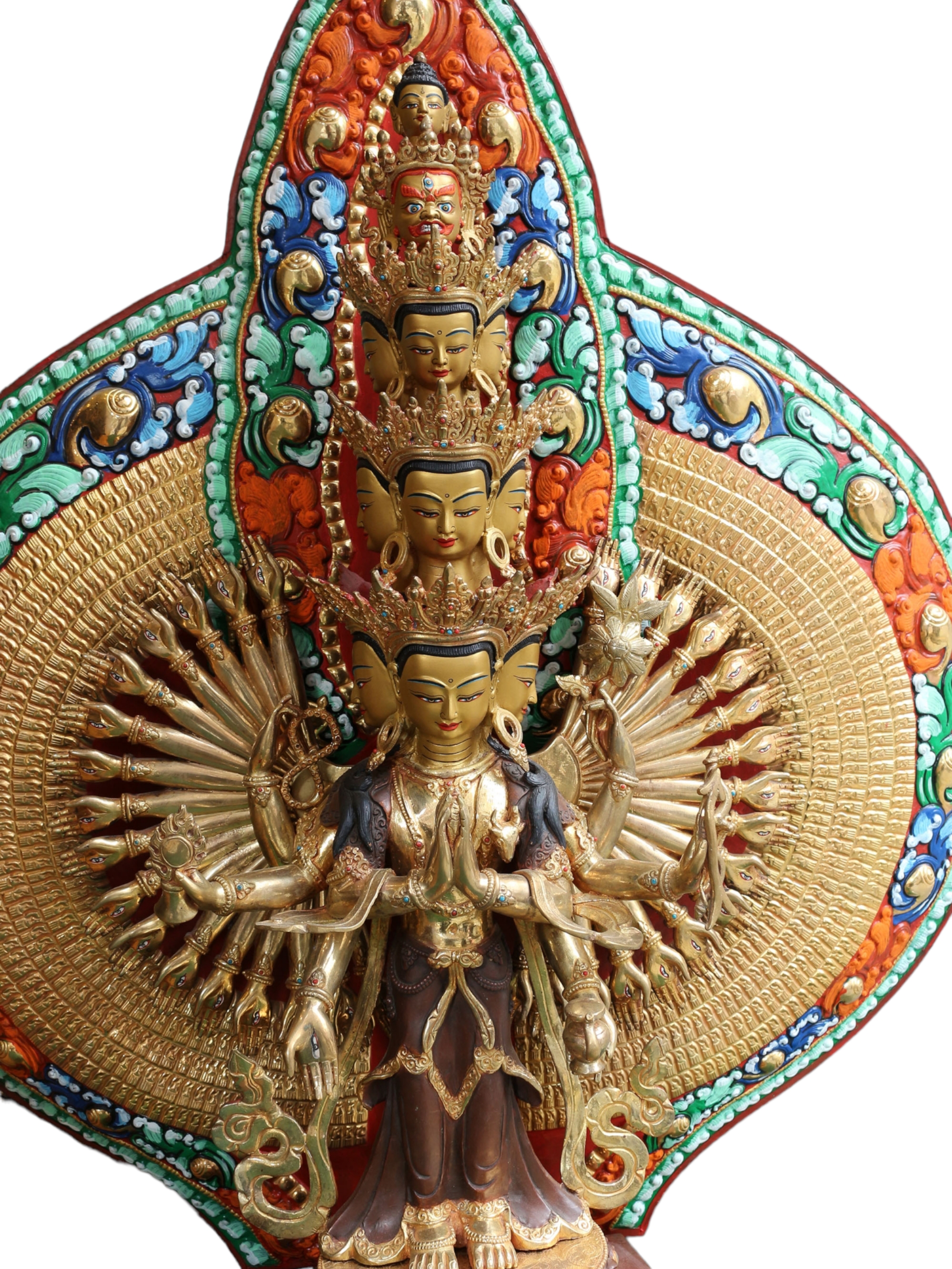 of Sahasrabhuja Avalokitesvara, Partly Gold Plated Painted Face" title="Buddhist Statue
of Sahasrabhuja Avalokitesvara, Partly Gold Plated Painted Face" title="Buddhist Statue